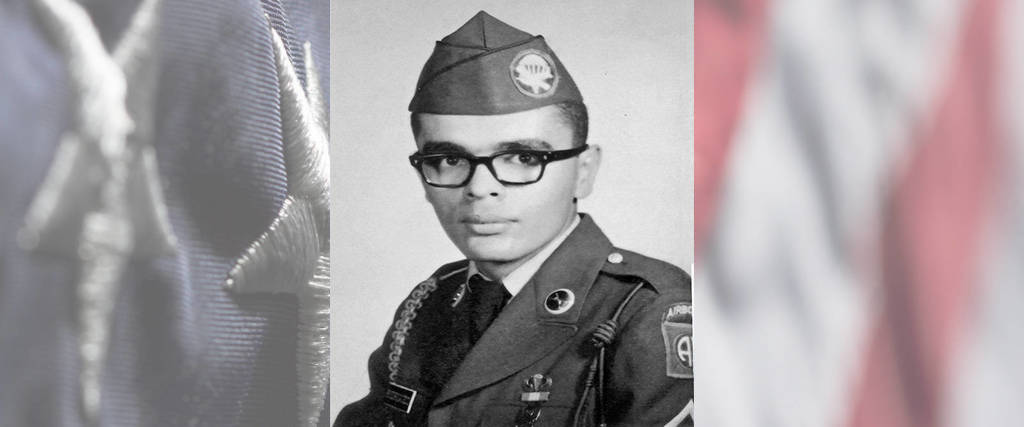U.S. Army Vietnam Schererville, IN Flight date: June, 2019
By Al Rodriguez, Honor Flight Chicago Veteran Interviews Volunteer
I met Luis, Louie, as he energetically walked around coordinating the volunteers at a Disabled American Veterans Walk/Run. The DAV is an organization that he belongs to and enjoys working at its events. Luis’s middle name, Obed, has biblical roots, meaning servant or to serve. It certainly is an appropriate name for him because of his commitment to various veteran organizations and, of course, his courageous Army service.
Louie was born in Camuy, Puerto Rico, the same birthplace as his mom and dad. (Coincidentally, it’s where my mom was born so we might be related.) Louie’s father, Luis Rodriguez Adorno, served in WWII with the U.S. Army, entering May 22, 1945. After his service, he moved his family to New York City. When Louie was 5, they relocated to East Chicago, Indiana, where his father found work at Inland Steel.
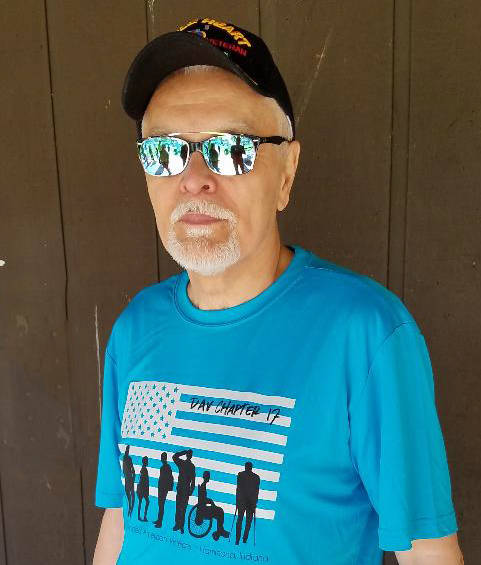
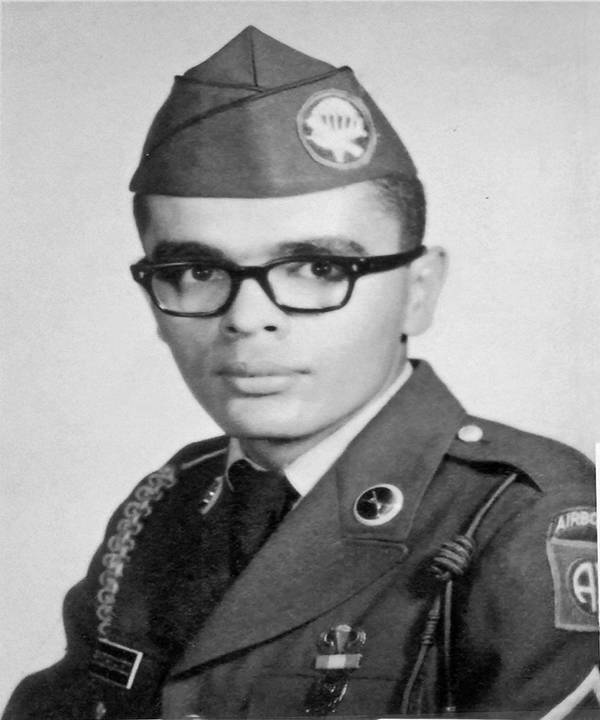
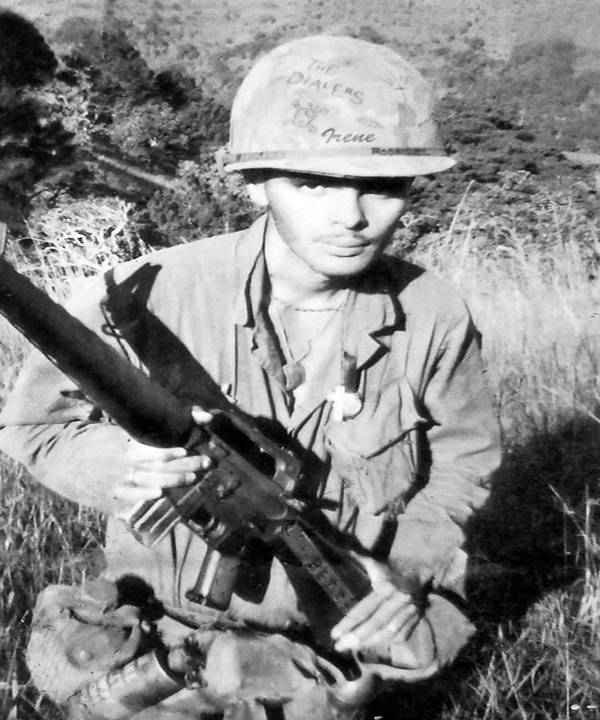
Louie graduated high school in 1966. He went to work at Inland Steel then enlisted in the Army. After Basic and Paratrooper Training he qualified as a light weapon, infantry specialist. He was stationed at Fort Polk for specialty training at ‘Tigerland’ using escape and evasion tactics in mock-up Vietnam villages. From there he was sent to Fort Bragg to the 82nd Airborne where he attended NCO School Training for infantry proficiency. He loved parachuting so he volunteered to jump out of helicopters and airplanes, once jumping out of a high altitude Air Force C-141.
Louie married right before being deployed to Vietnam in September of 1967. He landed in Cam Ranh Bay and was assigned to the 101st Airborne, 1st Brigade, 2nd Battalion, 502 B Company located in Phan Rang. One of their company’s nicknames was ‘Nomads’ because they were sent to combat throughout South Vietnam. Their other nicknames were the ‘Dealers’ — short for dealers of death — and ‘Widow Makers.’ Enhancing their legacy, they left cards, an Ace of Spades and their 1st Brigade ‘compliments’ card on the bodies of any enemy combatants.
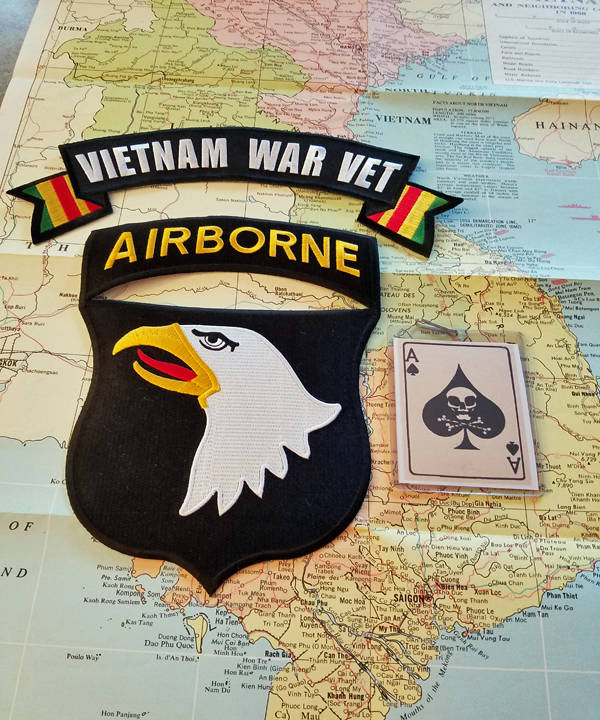
As explained by Louie, the mission of the 101st, 1st Brigade was to search and destroy the North Vietnamese Army and the Viet Cong wherever they were found. The capture of prisoners for intelligence, especially of high ranking combatants was a priority. When they went ‘in country,’ it was an air assault, transported by helicopter into an area for 30 to 45 days. They would patrol through mountains, rice paddies and jungles with tree canopies that would make daylight turn into night. They lived, ate and slept wherever they were deployed. To sleep they dug an 8” to 10” shallow hole just below ground level. Sleep did not come easy as they would average 4 to 5 firefights while in the field. When supplies were needed, they were brought in by helicopter.
All soldiers had to keep their rifle, ammunition and other supplies usable, especially during monsoon season. Louie wrapped a bandana around the muzzle of his M-16 and kept it along with his ammunition in a rucksack to keep them clean and dry. Because of these conditions the soldiers would compete for the heavy plastic bag shipped with the battery of the PRC-25 radio used by the radio man. These bags would keep whatever was inside dry and clean. He still has one of these bags containing all the letters he received from his family while in Vietnam.
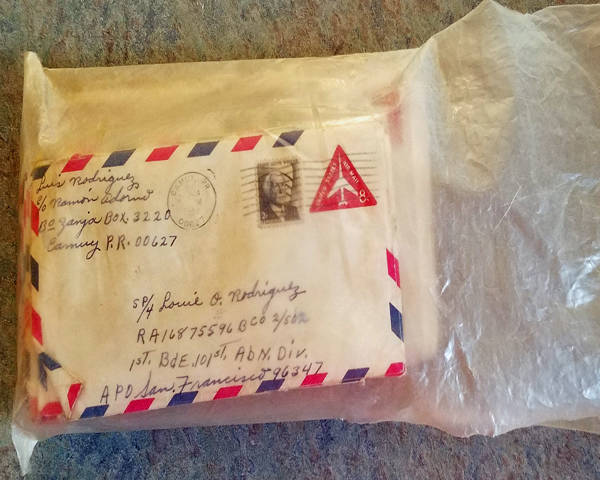
The Tet offensive happened on the Vietnamese New Year holiday, on January 30, 1968. It was a surprise attack against military and civilian command and control centers throughout South Vietnam by the Viet Cong and NVA. Louie and the 101st were in ‘stand down’ in Bien Hoa near Saigon. They were ‘called up’ and on January 31, 1968, transported by helicopters to the roof of the U.S. Embassy to secure the building, floor by floor.
The 101st was sent into the A Shau Valley near Hue in Northern South Vietnam to help the Marines in securing that area. On April 11, 1968, Louie was point man of Company B accompanied by a tank and three Army Personnel Carriers. As they walked into the valley, the NVA launched two rocket-propelled grenades to try to destroy the tank. Shrapnel from the RPG’s hit Louie in his left eye and wrist. The explosion knocked his helmet and M-16 away from him. He told me he felt hopeless and lost because, since Basic Training, it had been drilled into him to protect and keep his weapon clean. It would save his life. Under fire he spotted his weapon and crawled towards it and away from Company B. They shouted for him to come back to them but he told them he needed his weapon. Still under fire they grabbed him and pulled him back to safety.
Louie lost the sight in his left eye and was medically evacuated to the 106th General Hospital in Japan. His tour of duty in Vietnam was over. His personal effects were put in a med-evac bag, as seen in the picture on the right, when he was transported to Walter Reed Hospital in Washington D.C. for a successful cornea transplant. He had limited vision in that eye. After his stay at Walter Reed, he was assigned to Fort Bragg where he completed his enlistment in 1969 as a Sergeant (E-5).
Homecoming was interesting for Louie. He was in uniform when he arrived at O’Hare Airport. An older gentleman talked to him about the protests at the airport and suggested he change his clothes to prevent a confrontation. He went into the bathroom and changed into his ‘civvies.’
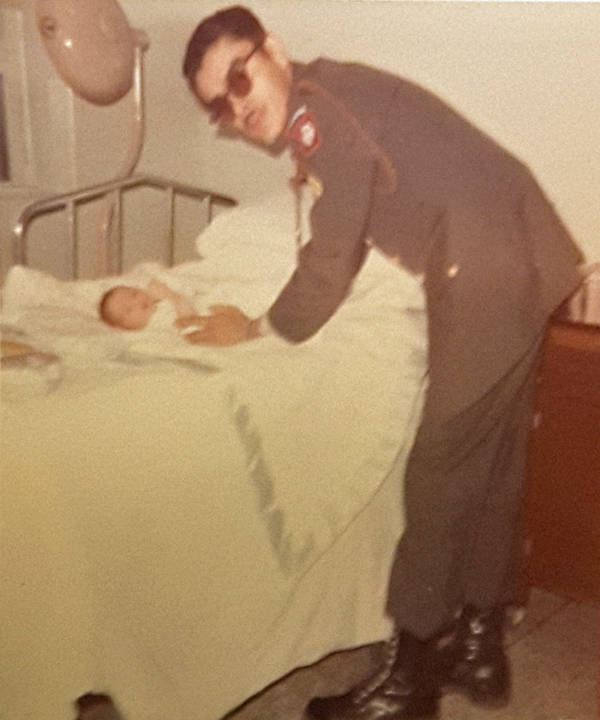
He was blessed with a son in 1969 and used the G.I. Bill to buy a house for his family. Louie returned to work at Inland Steel in East Chicago, Indiana. He also enlisted and remained in the Army Active Reserve until 1988 when he retired as a Staff Sergeant (E-6). After 44 years as a machine shop operator (testing the steel sold to customers such as Ford and Honda,) he retired from Inland Steel in 2009. His family has expanded to include three grandchildren, two boys and one girl.



